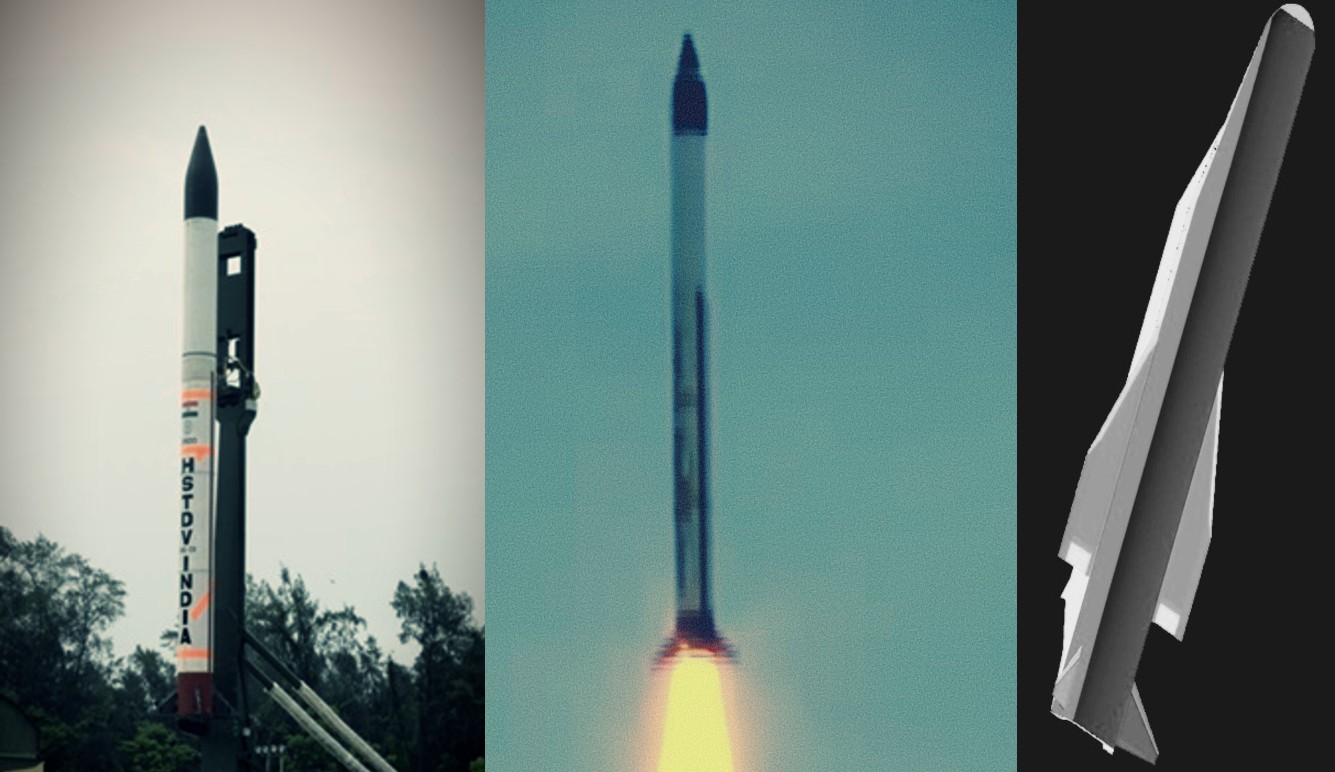
A little over a year after India’s first test of a hypersonic air vehicle didn’t quite go as planned, a second test conducted this morning has been officially declared to be a major success, with the hypersonic vehicle separating successfully and completing a flight with speeds of up to 6 Mach. The test is a credible first step towards an entire family of very high cruise missiles and other weapon systems.
In a statement, the Indian MoD said, ‘Defence Research and Development Organisation (DRDO) has successfully demonstrated the hypersonic air-breathing scramjet technology with the flight test of Hypersonic Technology Demonstration Vehicle (HSTDV) at 1103 hours from Dr APJ Abdul Kalam Launch Complex at Wheeler Island, off the coast of Odisha today. The hypersonic cruise vehicle was launched using a proven solid rocket motor, which took it to an altitude of 30 kilometres, where the aerodynamic heat shields were separated at hypersonic Mach number. The cruise vehicle separated from the launch vehicle and the air intake opened as planned. The hypersonic combustion sustained and the cruise vehicle continued on its desired flight path at a velocity of six times the speed of sound i.e., nearly 02 km/second for more than 20 seconds. The critical events like fuel injection and auto ignition of scramjet demonstrated technological maturity. The scramjet engine performed in a text book manner.’
Here’s a video of today’s test, a clip that captures the ballistic phase of the test, but not the final separation of the hypersonic air vehicle, designated by DRDO as the Hypersonic Technology Demonstrator Vehicle (HSTDV):
While the ballistic carrier phase is understood to have failed in the first test last year, today’s test is understood to have crossed those hurdles and achieved full separation of the hypersonic air vehicle.
The MoD statement added, ‘The parameters of launch and cruise vehicle, including scramjet engine was monitored by multiple tracking radars, electro-optical systems and Telemetry Stations. The scramjet engine worked at high dynamic pressure and at very high temperature. A Ship was also deployed in the Bay of Bengal to monitor the performance during the cruise phase of hypersonic vehicle. All the performance parameters have indicated a resounding success of the mission. With this successful demonstration, many critical technologies such as aerodynamic configuration for hypersonic manoeuvers, use of scramjet propulsion for ignition and sustained combustion at hypersonic flow, thermo-structural characterisation of high temperature materials, separation mechanism at hypersonic velocities etc. were proven.’
The following slide provides an overview of what the flight seqence looks like:

Livefist had revealed a first image of a wind-tunnel model of the HSTDV ten years ago here. The program itself has been under research and development for a better part of two decades now.

Indo-Russian joint venture BrahMos Corp. which makes the in-service ramjet-powered BrahMos supersonic cruise missile is also developing a hypersonic BrahMos II, though it is unclear how the current technologies being proven on the HSTDV will feed into that. You can read about recent milestones in the BrahMos program, including operational clearance for the air-launched version here.
While the HSTDV will feed directly into a future cruise missile program, there has been recent progress on India’s subsonic cruise missile program as well. You can read our recent detailed report on the newly cleared long range land attack cruise missile (LACM) for the Indian Navy here.
from Livefist https://ift.tt/2RfFXyR
via Live Defense
 Reviewed by Unknown
on
04:46:00
Rating:
Reviewed by Unknown
on
04:46:00
Rating:


No comments: